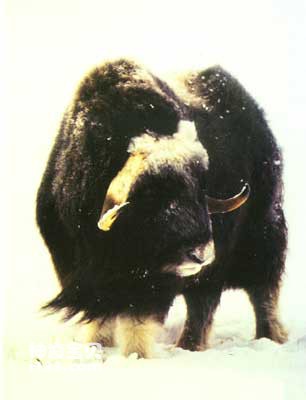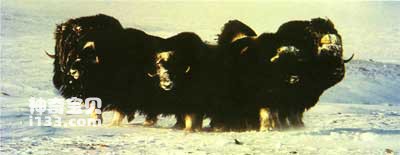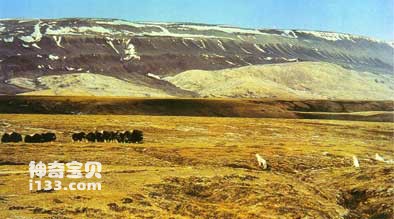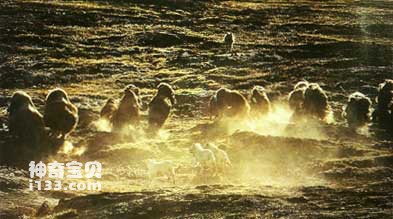Musk ox, also known as musk ox, does have a musky smell, especially during the estrus period, but not everyone likes that smell.

The musk ox is an animal between cattle and sheep in terms of classification. Perhaps it is more appropriate to attribute it to the sheep family or the antelope family. Judging from its appearance, it looks more like a yak in Tibet, my country, and it does have a bullish temperament. Musk ox is about 1 and a half meters tall, about two to two and a half meters long, and can weigh more than 400 kilograms. Female cattle are slightly lighter, only about 3/4 of male cattle. Its weight is mainly concentrated on the front half of its body with fleshy peaks. It is heavy in front and light in back, making it particularly strong and powerful. It is the largest herbivore in the Arctic. It is distributed on the ice sheets of Canada, Greenland and northern Alaska. It is rich in mosses, lichens and plants. It feeds on roots, stems and bark. It moves slowly but is full of energy, making it the master of the tundra.

Musk oxen form a circle when danger comes
Musk ox has a pair of extremely hard horns on its head, which are powerful weapons for defense and duel. It is covered with drooping long hair that can be dragged to the ground. There is a thick layer of high-quality down under the long hair, which the Eskimos call It is called "Quwet"; its ears are small and covered with thick hair; its nose is the only exposed part of the body; the body structure of the musk ox can effectively reduce heat loss and withstand wind speeds of 96 kilometers per hour and low temperatures of -40°C . In such a harsh environment, life can be carried out as usual. In the middle of winter, warm airflow sometimes visits the Arctic and brings heavy rain. The poor musk ox is often soaked in the water. When the cold wind blows, the rainwater on the body will form thick ice armor. As a result, The musk ox suddenly turned into a big ice rudder, unable to move, and disaster ensued. Some musk oxen froze to death as a result.

The two armies confront each other, and the wolves approach the musk ox
Under normal circumstances, musk oxen appear extremely docile and walk slowly, as if they are thinking about important issues. He stopped to eat some food, then lay down on the ground and chewed it slowly, and then dozed off after a while. When you wake up a little, then walk a little further forward. By doing this, musk oxen can reduce energy consumption on the one hand, and reduce food requirements on the other, killing two birds with one stone. According to reports, because the musk ox maintains energy so efficiently, it requires only 1/6 of the food required by a similarly sized cow.

The musk ox could not withstand the attack and was defeated.
Musk oxen have a docile temperament and never cause trouble. Even if powerful enemies come (mainly Arctic wolves), they follow the principle of "I will not attack others unless they attack me", and they are always ready and never take the initiative to attack. At this time, they will adopt a collective defense strategy, automatically forming a circle, placing the weak in the middle, and using their huge bodies to form an effective protective "wall", glaring at the intruders, and erecting the hard-like The horns of the steel fork seem to use their power to make the opponent surrender. Once the enemy attacks, they will fight to the death and never flinch.
animal tags: Muskox
We created this article in conjunction with AI technology, then made sure it was fact-checked and edited by a Animals Top editor.